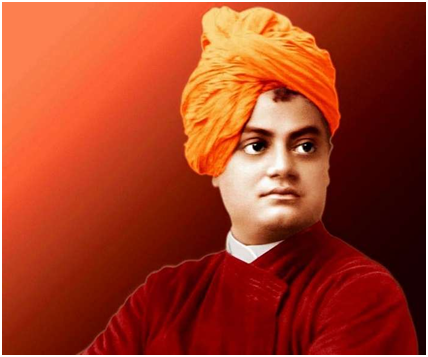My City My Place
KHAJURAHO (Eternal Expressions of Love)
The temples of Khajuraho are India’s unique gift to the world, representing as they do, a paean to life, to love, to jay, perfect and moon, has been captured in stone, testifying not only to the craftsman’s artistry but also to the extraordinary breadth of vision of the Chandela Rajput’s under whose rule the temples were conceived and constructed.
The Khajuraho temples were built in the short span of a hundred years, from 950-1050 AD in a truly inspired burst of creativity. Of the 85 original temples, 22 have survived till today to constitute one of the world’s great artistic wonders.
The creators of Khajuraho claimed descent from the moon and the legend behind the founding of this great dynasty and the temples is a fascinating one. Hemwati, the lovely young daughter of a Brahmin priest, was seduced by the moon god while bathing in a forest pool.
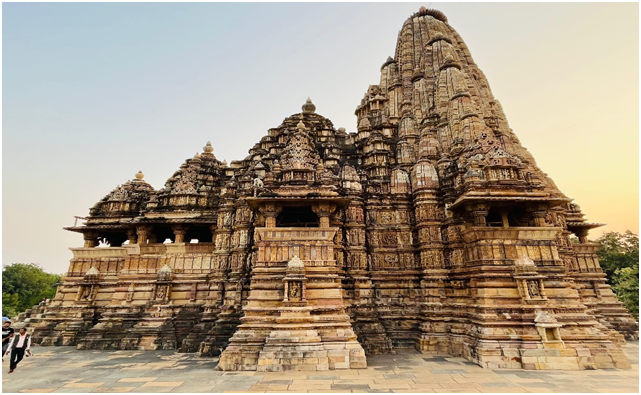
The child born of this union was Chandra Varman, founder the Chandela dynasty. Brought up in the forests by his mother who sought refuge from a censorious society, Chandra Varman, when established as a ruler, had a dream visitation from his mother. It is said that she implored him to build temples that would reveal human passions, and in doing so, bring about a realization of the emptiness of human desire.
It is also possible that the Chandelas were followers of the Tantric cult, which believes that gratification of earthy desires is a step towards attaining the infinite liberation or nirvana.
Why they chose Khajuraho, even then a small village, as the site for their great complex is also open to speculation. One theory is that, given the eclectic nature of their faith and the many beliefs represented in the temples, the Chandelas conceived Khajuraho as a seat of religion and learning, to bring together many sects.
What to See
Western Group
Kandariya Mahadeo: Approximately 800 sculptures are carved on the interior and exterior walls of this magnificent temples. The lintels of the sanctum and the doorjambs have rich floral carvings. Inside the sanctum stands a Shivlinga. Three bands of sculptures on the outer walls depicts gods and goddesses and mythical beasts. The erotic sculptures are concentrated on the northern and southern façade.
Chaunsath Yogini: The only granite temple and the earliest surviving shrine of the group (900 AD), it is dedicated to Kali. Only 35 of the original 65 shrines remain. Another Kali temple originally dedicated to Vishnu) is the Devi Jagdambe Temple.
Chitragupta Temple: The temple walls depict an artistic profusion of sculpture of Gods and Goddesses, apsaras and amorous couples. In the central niche of the southern façade, there is a magnificent carving of Lord Vishnu with 11 heads. The temple is dated to 11″ century and is also known locally as Bharat’s temple.
Vishwanath Temple: The interior of the temple contain some of the well-known sculptures of Khajuraho like a lady playing flute, a mother with her child and another lady painting her foot. The ceiling is equally profusing with sculptures of floral patterns.
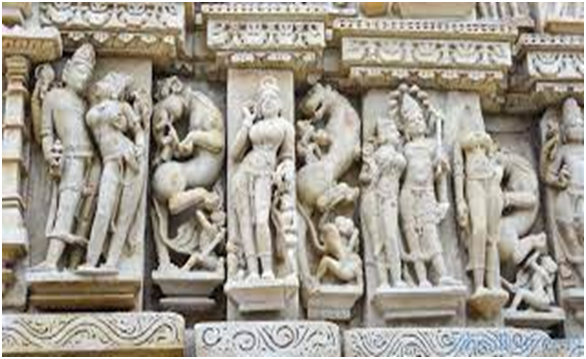
Lakshmana Temple: The Laxman Temple in a Panchayatan type of temple meaning there are 4 shrines at the corner of the courtyard. The subsidiary shrine also displays the outburst of creativity in stones with carved panels and ornamented doorways. The main temple is entered through richly embellished doorways known as Makar Tornas for the arched crocodiles.
Matangeswara Temple: Still a living place of worship, the temple is dedicated to Shiva, has an eight feet high lingam and is outside the precincts of the Western Group. The Khajuraho Dance Festival is held annually between February and March.
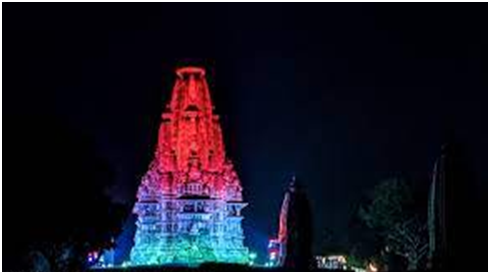
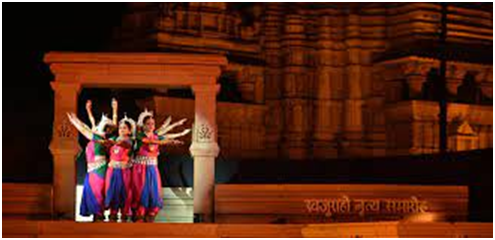
Eastern Group
Parsvanath Temple: The group’s largest Jain temple and exquisite in detail. The sculptures on the northern outer wall are particularly noteworthy. The themes depict, in charming detail, everyday activity. Within, a throne faces the bull emblem of the first tirthankara, Adinath. The Parsvanath image was installed in 1860.
Ghantai Temple: This Jain temple has a frieze which depicts the 16 dreams of Mahavira’s mother, and a Jain goddess on a winged Garuda.
Southern Group
Duladeo Temple: This temple is dedicated to Shiva and is dated in 1000-1150 AD. Shiva is known as Dulhadev here meaning the holy bridegroom. Historians hold it to be the last of the temples built by the Chandellas. The temple is laid in the seven chariot plan (saptarata).
Sound & Light Show: This fascinating Son-et-Lumière spectacle evokes the life and times of the great Chandela Kings and traces the story of the unique temples during 10 & 11th centuries. Mounted in the complex of the Western Group of temples, the 50-minute show runs in Hindi and in English every evening. Amitabh Bachchan, the Indian super star, narrates the story of Khajuraho in his mesmerising voice.

State Museum of Tribal and Folk Arts: A fine collection of masterpieces of tribal and folk arts and artifacts from all over Madhya Pradesh is on display at the Chandela Cultural Complex. The State Museum has more than 500 representative items of terracottas, metal craft, woodcraft, tribal and folk paintings, tattoos, jewellery and masks.
Timings: The museum is open on all days except Mondays and Government Holiday from 12 noon to 8.00 p.m.Raneh Falls: Raneh Falls is on the majestic Ken River. The main attraction here is the Canyon of Crystalline Granite 5km long and 100ft deep. This granite has shades of pink, red, misty white, green and gray.
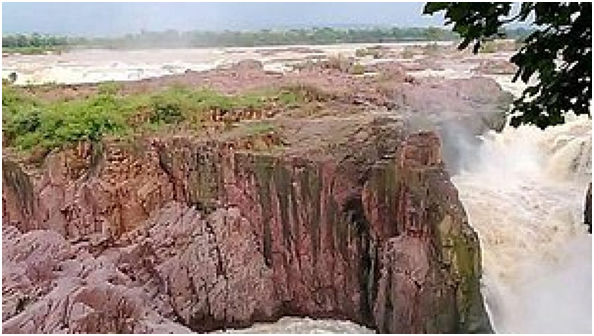
The Chhatarpur district has many monuments of archaeological importance including cenotaphs, fortresses and temples. An exploration of these remains of glory will add to your experience. Bandi Saliyya, remains of ancient temple group at Kaindi-9 kms from the district headquarters of Chhatarpur, Dronagiri Jain Temples Sendhwa, The tomb of Maharaja Chhatrasal’s spouse Maharani Kamlapati and Mastani Mahal at Mau Sahania.
By- Team Khajuraho



